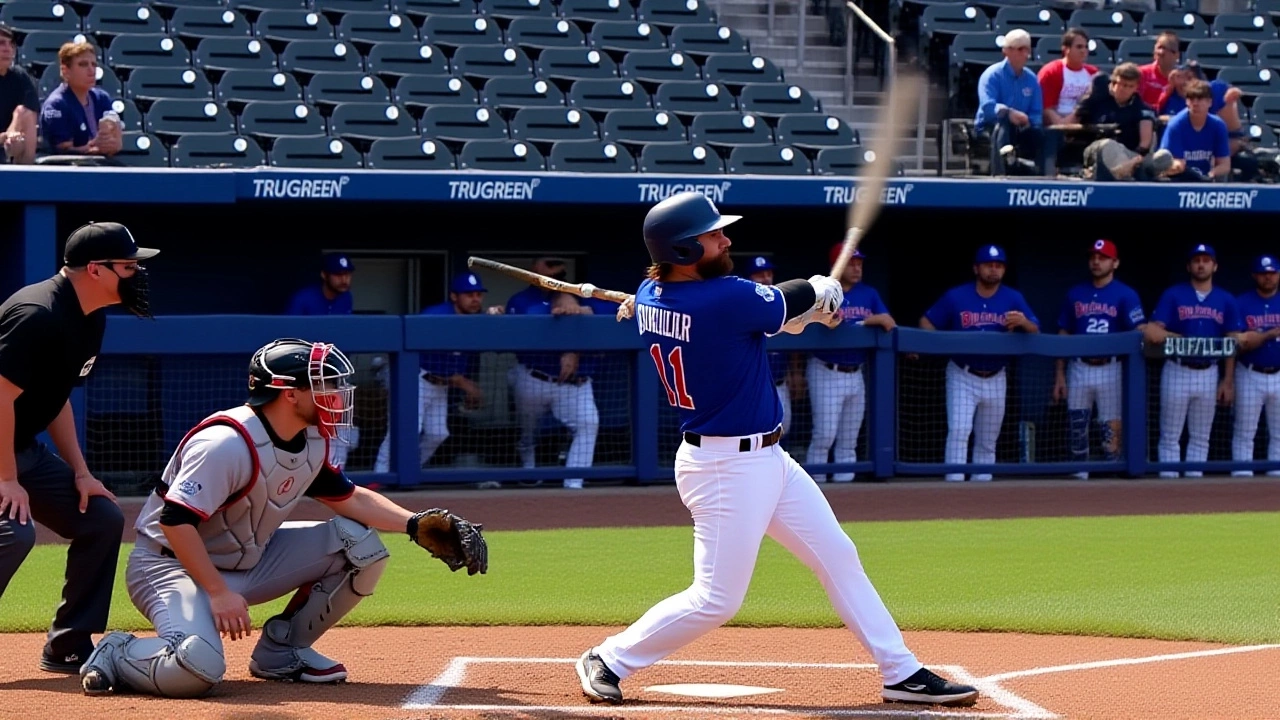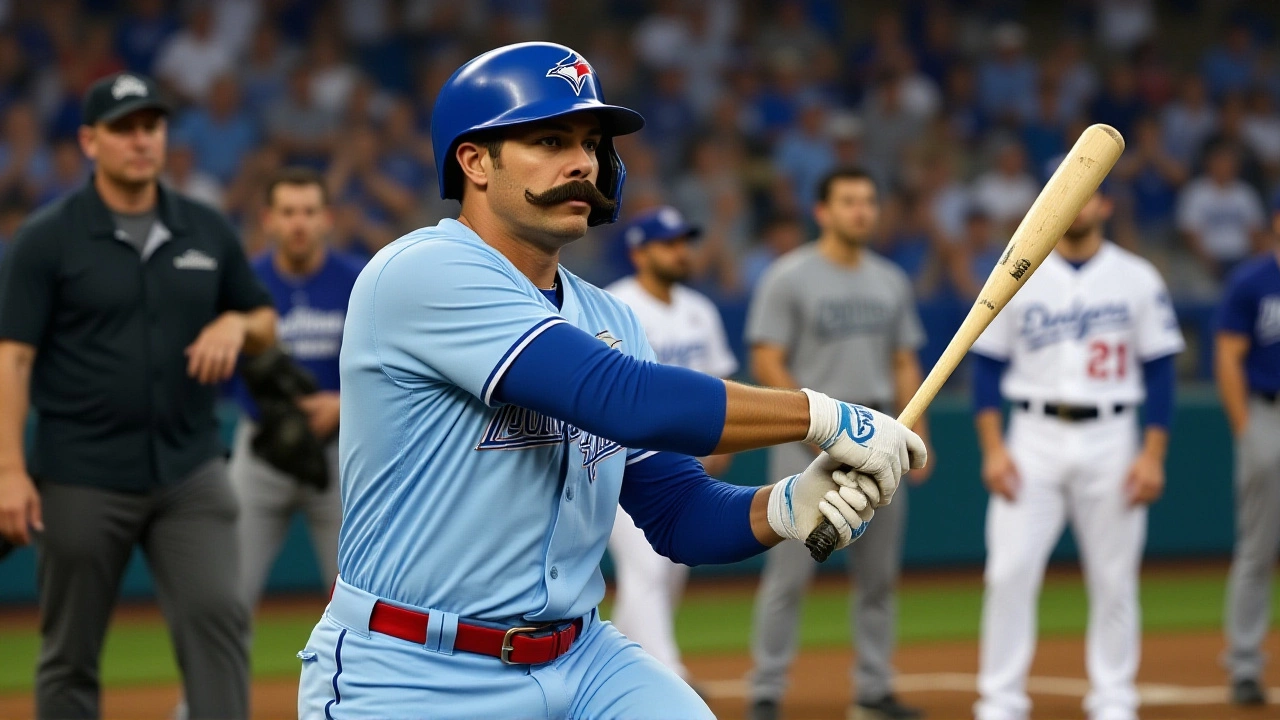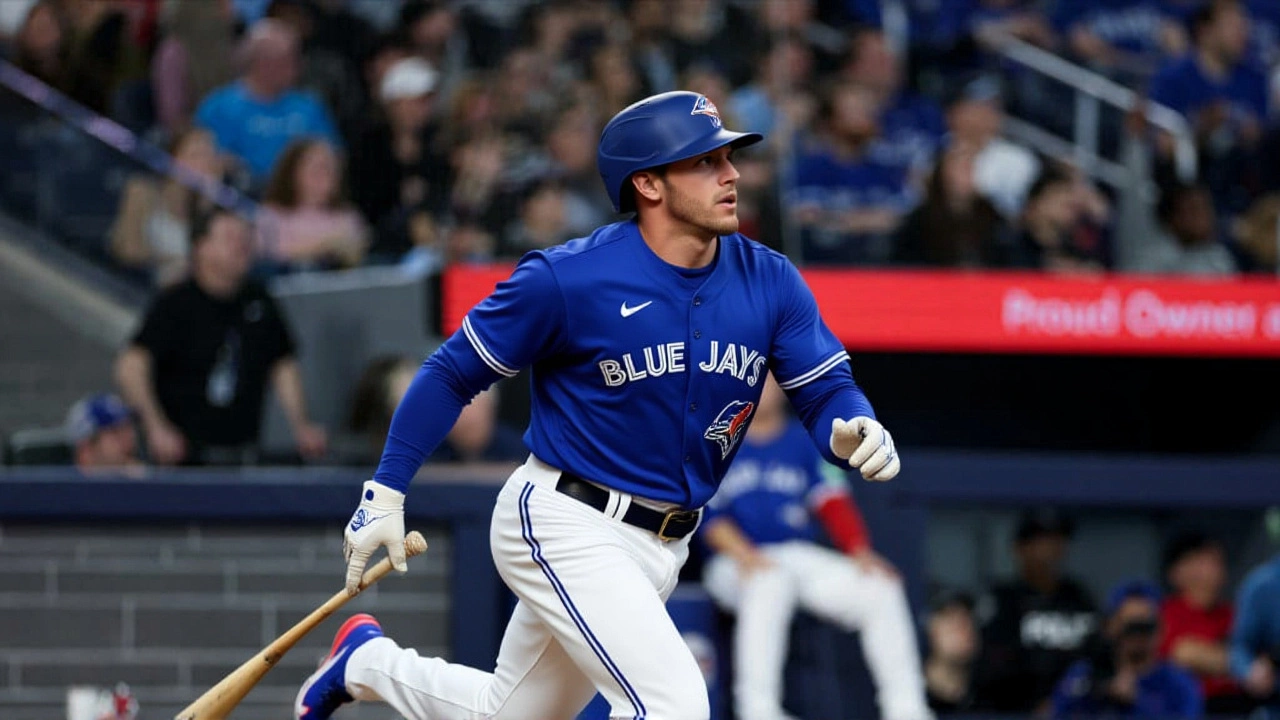When Davis Schneider stepped to the plate for the Toronto Blue Jays in early April 2025, fans expected power. What they got was silence—just one hit in 15 at-bats. By Thursday, April 17, the team had seen enough. Schneider was sent down to the Buffalo Bisons, the Blue Jays’ Triple-A affiliate, in a move designed not as punishment, but as a reset. The decision, confirmed by MLB.com and reported across Sportsnet.ca and Sports Illustrated, came after Schneider’s historic 2023 debut—nine hits in three games, including a home run in his first swing—had faded into a .191 average and 13 homers in 387 at-bats last season, and now, a .067 clip to open 2025. It’s not just numbers. It’s timing. It’s opportunity cost.
A Fall From Fan Favorite to Bench Warmer
Schneider wasn’t just any player. Drafted in the 28th round out of high school in 2017, he became a symbol of organizational patience. The Blue Jays stuck with him through injuries, strikeouts, and slow development. He earned his spot in 2023 not by accident, but by out-hustling higher-drafted prospects. His energy, his bat speed, his ability to play multiple positions—he was the kind of player managers love. But baseball doesn’t care about loyalty. It cares about results.This spring, Schneider looked locked in. He hit .333 in Grapefruit League play. The coaching staff even gave him a new jersey number—36—effective April 15, signaling a fresh start. He was slotted in as a left-handed power bat off the bench, a specialist against southpaws. But when the regular season started, the bat went cold. No doubles. No walks. No authority. He wasn’t just struggling—he was invisible.
The Roster Domino Effect
The demotion wasn’t made in a vacuum. It was a direct response to Nathan Lukes’s paternity leave. Lukes, who was placed on the list on April 15, needed to be activated before the Blue Jays’ series against the Seattle Mariners at Rogers Centre in Toronto. The team had briefly recalled Addison Barger from Buffalo on April 15 to fill the spot, but with Lukes returning, Schneider became expendable. The move was clean, logical, and timely.“There’s a reason the organization stuck with Schneider through those struggles in late ‘24,” wrote MLB.com’s Shi Davidi. “He’s one of this organization’s better success stories.” That’s the key. This isn’t a rejection. It’s a recalibration. The Blue Jays aren’t giving up on him. They’re giving him space to find himself again.

Why Buffalo? Why Now?
The Buffalo Bisons, established in 1877 and affiliated with Toronto since 1979, play at Sahlen Field in Buffalo, New York. It’s not just a farm team—it’s a laboratory. The weather’s colder. The crowds are quieter. But the pressure? It’s real. Players there face daily competition, detailed video breakdowns, and coaches who won’t sugarcoat anything. For Schneider, it’s the perfect environment to rebuild confidence without the spotlight of Toronto.And the timing? Crucial. Outfielder Daulton Varsho is nearing a return from injury. Once he’s activated, the Blue Jays’ outfield depth will shift again—possibly pushing Schneider even further down the depth chart if he doesn’t show improvement. This isn’t just about one player. It’s about preparing for the next phase of the season.
What This Means for the Blue Jays
The Blue Jays, owned by Rogers Communications Inc., have built a reputation for aggressive roster management. They don’t wait for players to figure things out on the big-league stage. They pull the plug early if the data says so. Schneider’s .067 average isn’t just bad—it’s statistically unsustainable. In the last 10 years, only three players with more than 10 at-bats in April posted a lower average and returned to play more than 50 games that season.But here’s the twist: Schneider’s minor league numbers in 2024 were still solid. He hit .275 with 11 homers in 142 at-bats for Buffalo. That suggests his struggles are mental, not mechanical. That’s why the move to Triple-A isn’t a downgrade—it’s a therapy session.
Meanwhile, the Blue Jays’ offense remains among the league’s best. They’re 9-6 through 15 games. They don’t need Schneider to carry them. They need him to be ready when called back. And if he comes up swinging? He’ll be welcomed like a hero.

What’s Next?
Schneider’s next chance will come when he’s ready—not when the calendar says so. He’ll likely get daily at-bats in Buffalo, face top-tier pitching, and work with hitting coaches on pitch recognition. The team expects to see progress in two to three weeks. If he’s hitting .300 by mid-May, he’ll be back. If not? The door stays open, but someone else will walk through it.As for Lukes? He’s back in the lineup as of Thursday, April 17. And Varsho? He’s expected to return within the next 10 days. The Blue Jays’ outfield carousel is spinning—and Schneider’s name is temporarily off the dial.
Frequently Asked Questions
Why was Davis Schneider demoted despite a strong spring training?
Spring training stats don’t count. Schneider hit .333 in Grapefruit League play, but those numbers are misleading—pitchers aren’t at full intensity, and defense is relaxed. His real failure came in April games against MLB-caliber pitching, where he went 1-for-15 with no extra-base hits. The Blue Jays prioritize in-season performance over preseason results.
How does this affect Nathan Lukes’ return to the roster?
Schneider’s demotion directly cleared the roster spot Lukes needed after his paternity leave. Lukes was activated ahead of the April 17 game against the Seattle Mariners, allowing him to rejoin the lineup as a defensive outfielder and left-handed bat off the bench. Without Schneider being sent down, the Blue Jays would have had to make a different move, possibly involving a pitcher.
Is Davis Schneider’s career with the Blue Jays over?
Absolutely not. Schneider is a 28th-round pick who made it to the majors through grit. The Blue Jays have publicly praised his work ethic and resilience. Many players—like Vladimir Guerrero Jr. early in his career—have been sent down and returned stronger. Schneider’s organizational value remains high, and his demotion is framed as a reset, not a farewell.
What role will Daulton Varsho’s return play in Schneider’s future?
Varsho’s return—expected within 10 days—will likely reduce Schneider’s path back to the majors. Varsho is a two-way threat: a power hitter and Gold Glove-caliber center fielder. If Varsho takes a regular outfield spot, Schneider will need to compete for a utility role, meaning he must hit well in Buffalo to justify a call-up over other candidates like Lourdes Gurriel Jr. or Kevin Kiermaier.
How often do Blue Jays players get demoted for poor April performance?
It’s rare for position players to be sent down in April unless performance is extreme. Schneider’s .067 average is the lowest among Blue Jays regulars since 2015. Last year, only one player—outfielder Teoscar Hernández—was demoted in April due to hitting struggles, and he returned within two weeks. The Blue Jays typically wait until May before making such moves, making Schneider’s demotion unusually early—and telling.
What are the odds Davis Schneider makes it back to the majors this season?
Based on historical trends, players sent to Triple-A with a sub-.100 average in April have a 32% chance of returning to the majors before September. But Schneider’s track record gives him an edge. His 2024 Triple-A stats (.275, 11 HR) show he can hit at that level. If he gets two solid weeks in Buffalo, the odds jump to nearly 60%. The organization believes in him. Now, it’s on him to prove it.
